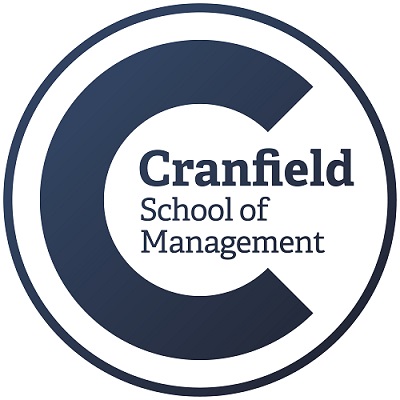- Leadership
Leading Organizational Resilience
Professor David Denyer and Dr Elmar Kutsch combine for an engaging presentation at the latest Leadership Series event from Cranfield School of Management @Brand Exchange, London
“We still have ‘surprising’ events,” said Professor David Denyer, last week at a Cranfield School of Management Leadership Series breakfastin the City. “Sometimes these ‘surprising events’ will have a 25 year incubation period and we have just been sleepwalking into them.”
In a wide-ranging and thought-provoking presentation Denyer laid out his own definition of organizational resilience, based on the latest work being carried out by he and his colleagues at the Cranfield School of Management; “An organization’s resilience can be defined as its ability to anticipate, prepare for, respond, and adapt to incremental change and sudden disruptions, in order to survive and prosper.”
Behind Professor Denyer was a photo wall of logos and signages that carry certain connotations when displayed together as a group; Blockbuster, Toys R Us, VW, Woolworth, Northern Rock, Toyota, Oxfam, BP, Carillion, and – a more recent addition – Thomas Cook. The connotations are not of preparedness, responsiveness, or of an ability to adapt.
“Every business is successful until it’s not,” Denyer said – quoting from Gary Hamel and Liisa Välikangas’ influential HBR paper The Quest for Resilience. “What’s amazing is how often top management is surprised when ‘not’ happens.”
How can an organization drift for such a long period of time without someone noticing the warning signs? It took 5 years for someone to blow the whistle on the horrific failures of care at the Stafford Hospital in the mid-2000s – he points out.
“Large organisations tend to prefer nature’s ‘freeze’ response to threat – rather than to fight or flight. They have perfected the ‘tortoise technique,’” Denyer explains.
Denyer’s model of organizational resilience shows a balanced, centre-of-the-road directional approach – and he labels this ‘logic’. On the left-hand side of the road we see the ‘Progressive’ approach – which is characterised by; production, opportunities, achieving results, and ‘making things happen’. While on the right we have ‘Defensive’ (prevention, threats, protecting results, stopping [bad] things from happening). Denyer explains how typically an organization will tack from one side of the road all the way across to the other, in knee-jerk responses and from a tendency to overcompensate in the face of the ‘surprising events’ we might encounter.
As an example, he cites the financial crash of 2008 as resulting in a long defensive reaction in terms of banking regulation that likely stymied recovery across much of the sector. The healthy balance of the centre road is rarer than it should be, says Denyer.
Dr Elmar Kutsch, taking the reins of the presentation at the halfway point, drills down on this centre-of-the-road, logical, balanced way forward – and asks how can we achieve the transition in mindset necessary to navigate in this direction, as organizations.
Speaking, entertainingly, from his experience as a competitive skydiver, Kutsch highlights the tension that needs to be managed within this mindset – which is between ‘consistency’ and ‘flexibility’.
The consistency to be well-governed, compliant, and safe-guarded against ‘surprising events’ – but the flexibility to see them coming down the track, to react to them in useful and advantageous ways, and to adapt.
“A flexible mindset is one where we don’t just expect a single expected future, but we can imagine and prepare for multiple, differing, possible futures,” Kutsch says.
“How do you combine consistency in action, with flexible thinking? This is the ‘Holy Grail’ of leading organizational resilience,” he adds.
Bouncing off one another in an engaging Q&A session, Denyer perhaps hints at the Holy Grail’s rough coordinates for us; “Where is the line between consistency and flexibility? That line is a leadership and a cultural issue. In my experience, culture is the biggest risk to an organization, but the biggest potential competitive advantage too.”
…………………………………………………………………………………………………..
For more information about Cranfield’s Leading Organizational Resilience two-day open program click here
…………………………………………………………………………………………………..
ARTICLES YOU MIGHT LIKE
RESEARCH
Why organizational resilience requires adaptive leadership particularly in times of crisis
DEVELOPING LEADERS QUARTERLY MAGAZINE AND WEEKLY BRIEFING EMAILS


































